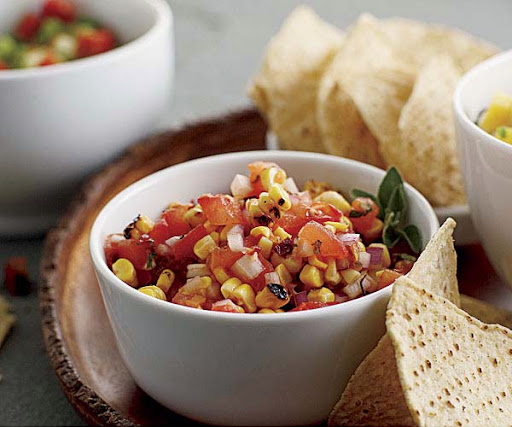
- 1 lb. fresh tomatillos, husks and stems removed, rinsed
- 2 or 3 fresh serrano chiles, cored and seeded, or 1 canned chipotle pepper, seeded
- 4 slices white onion, each 1/4 inch thick
- 3 cloves garlic
- 2 Tbs. chopped fresh cilantro
- 2 Tbs. vegetable oil
- 3 cups chicken broth
- 3/4 cup crème fraîche or heavy cream
- 3/4 tsp. salt; more to taste
Position a rack as close to the broiler as possible and heat the broiler. Arrange the tomatillos, fresh chiles (if using), onion slices, and garlic in a small, shallow baking pan. Broil, turning to ensure even cooking, until the tomatillos are soft and slightly blackened, about 10 minutes. Transfer the broiled ingredients to a blender and add the cilantro (if you’re using a canned chipotle, add it now, too). Blend until smooth.
Heat the oil in a medium saucepan over medium-high heat. Add the tomatillo mixture and cook, stirring, for 2 to 3 minutes. Add 2 cups of the broth and simmer until the sauce is thick enough to coat the back of a spoon, about 20 minutes. Taste the sauce. It should be a little tart, but it shouldn’t make your mouth pucker. If it’s too tart, add more broth and simmer until the sauce thickens again. Remove from the heat and whisk in the crème fraîche or heavy cream and the salt. Let cool slightly before making the enchiladas.



















